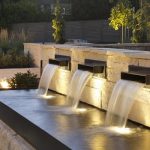Many commercial or industrial properties need to have secure fencing to keep intruders or vandals out. Some need to also keep animals out or in. The kind of security fencing chosen usually depends on the needs of the company, but other factors sometimes have to be taken into consideration. Climate, position and the type of ground – steep or flat – are all important aspects of choosing fencing to secure your site.
Having the right kind of fencing in place will give you peace of mind and reduce the costs of repairing damage. It can even avoid litigation if someone wanders onto your site and is hurt. Even though they were not supposed to be there, they can still sue the company if they get hurt.
Here are three of the best types of security fencing.
Chain link or mesh fencing. While you may think that chain link gaps can provide a toehold, the top being curved makes it very difficult for any athletic intruder to actually complete the climb in. Chain mesh fencing can be of various heights to suit your needs and the gaps can also be larger or smaller. There can be a single or double curved top with barbed wire along it to discourage climbers. It can also have a cement footing so no one can dig under it. It can be used for mining sites, sporting fields or community pools and many other applications due to its versatility. It is also a cost effective option for low security areas.
A higher level of security can be gained by using Garrison fencing. Tubular steel posts are attached to horizontal steel rails between steel posts that are cemented into the ground. Again, this type of fencing can be higher or lower, but the higher option offers better protection. It is often found around commercial properties, sporting fields, government facilities and schools. It can be finished with powder-coating – often chosen where it is important for the fence to look attractive.
Palisade security fencing offers the most effective protection of all. It is similar to Garrison, but with the addition of a curved top that is made with razor wire and can be electrified. The base is concrete so that it cannot be dug out and the rails have anti-tamper fixings to prevent the vertical steel posts being removed. Palisade fencing can also be fitted retrospectively to a concrete or brick fence or structure.
Of course, no security fencing can be considered complete without secure gates. Because they move, gates could be considered the weak point in any security fencing so it is essential that they are made and installed by highly qualified professionals. They will usually be of the same kind of material and style as the fencing that is used. Hinges and locks are important components that must be strong and secure to ensure no one can get in or out, who is not supposed to.
In cases where the security fence is simply to keep larger animals in a paddock, very often barbed wire strands are used and this option is very affordable and easy to put up between steel or timber posts. Smaller animals such as sheep require mesh fencing.
Videos
FG Terrain Tutorial: How to make Warhammer 40k Security Fencing
European Security Fencing






